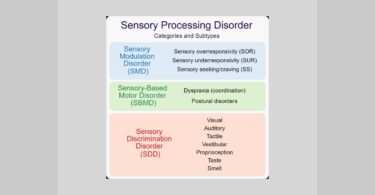Disease Nosology Part IV
If we focus on the tonic diseases, we find in Dr. Hahnemann’s writings that there are various dimensions, or jurisdictions, to tonic disease, generally divided according to origin or genesis. We will find that there are certain traditional jurisdictions recognized in medicine more generally, such as pathogenic and iatrogenic disease types. Hahnemann also had these in mind when he talked of the contagious nature of certain diseases, particularly the acute and chronic miasms. In addition, Hahneman spoke of that type of disease that involved a shock or trauma to the organism, a certain “disease irritation;” he termed such diseases “homogenic” in nature. Let’s look first at this one and the first two mentioned.
HOMOGENIC DIMENSION
This dimension relates to the various accidents and injuries, as well as mental and emotional shocks experienced by people. These are injuries that generally affect each individual in the same way, creating blockages to the normal flow of life energy. Thus, for each of these fixed, constant events, there are also specific remedies. This is also the basis for first aid and the home treatment of simple traumas, which can be done by almost anyone without more extensive knowledge of Heilkunst. The emotional shocks are more serious and can generate a host of mistunements of a person’s normal state of health. Hahnemann noted the effects of extended grief, vexation and fear on one’s health as being powerful triggers of the latent chronic miasms.
§93.1. If the disease has been caused by a remarkable event, recently or, in the case of a protracted malady, some time ago, the patient – or at least the relations questioned in private – will then readily declare it, either of his own accord or upon cautious inquiry.a]
§93.1.a]1 The physician must seek to trace by astutely phrased questions or other private inquiries the possible dishonoring occasions which the patient or the relations do not readily confess, at least not voluntarily.
§93.1.a]2 To these belong: poisoning or attempted suicide, onanism, common or unnatural lascivious debaucheries, revelry in wine, liquor, punch and other heating drinks, tea or coffee,?- luxuriating in eating generally or in particularly deleterious foods,?- venereal or prurient infection,?unhappy love, jealousy, domestic discord, vexation, grief over family misfortune, abuses, dogged revenge, offended pride, disruption of the pecuniary circumstances, superstitious fear,?- hunger,?- or perhaps bodily infirmities in the private parts, a hernia, a prolapse, etc.
Hahnemann speaks of remedies that are specific to the disease irritation and mentions that they are homogenic.
14.2 The reliably availing ones could not have been any others than the specific ones; that is, medicines which were homogenic in their action to the disease irritation, whose use, however, by the old school was forbidden and tabooed as highly damaging because observation had taught that, with the so highly intensified receptivity for homogenic irritations in diseases, such medicines in the conventional large doses had proven themselves life-endangering.
PATHOGENIC DIMENSION
This is the dimension of natural diseases, or “Wesenskrankheiten.” Natural diseases are in the nature of dynamic infections. Nature employs microbes as the carrier for each particular disease Wesen. As we learned earlier, the disease Wesen attempts to penetrate the Wesen of the human being. If successful, a separate disease Wesen is engendered within us and develops along a pre-determined path. If the disease Wesen is self-limiting (so-called acute), the Living Principle is able eventually to recover once the disease has run its course, through its counter-action. The main forms of pathogenic diseases are epidemic and sporadic diseases and the chronic miasms.
IATROGENIC DIMENSION
Each medicine is capable of engendering an artificial disease. Thus, it has the potential to harm as well as to cure. In very small doses, the medicine seems to be mainly self-limiting in nature, allowing the sustentive power of the Living Principle to re-establish balance relatively easily.
In crude form, the medicine has a high risk of harming the human organism, disturbing its healthy state and giving rise to abnormal functioning, the more so the larger the dose and the longer the medicine is applied. Eventually, the medicine may penetrate the generative power and engender a disease Wesen of its own. This is called iatrogenic disease (doctor-caused). Hahnemann was quite vocal in his criticism of this aspect of allopathic medicine and was often pessimistic about the ability of medicine to correct the damage caused by allopathic prescribing. However, with the subsequent development of isodes , remedies made from the medicine, we now have an effective curative method for dealing with these man-made diseases, which are as much the scourge of our times as in Hahnemann’s day.
IDEOGENIC DIMENSION
In addition to the above three, we can add a fourth that relates to Hahnemann’s discovery of the highest disease. Hahnemann was fully aware of the ability of suggestion (operating in the context of ignorance or superstition) or false belief to generate disease, even leading to death. These diseases involve dynamic affections, which he called “the highest disease.” Originally, disease arose out of a primordial split between the emotional and intellectual minds, which derived from a lack of true knowledge, giving ground to belief or delusion.
§17… the highest disease can be brought to pass by sufficient mistunement of the Living Principle by means of imagination, and so, in the same manner, taken away again.
§17.1.a]2 A premonitory dream, a superstitious fancy or a solemn fateful prophecy of inevitable death on a certain day or at a certain hour has not infrequently brought to pass all signs of arising and increasing disease of approaching death and death itself at the indicated hour which, without simultaneous actuation of the internal alteration (corresponding to the outwardly perceptible state), was not possible; thus, in such cases from the same cause, all the near-death-signaling disease features were in turn not infrequently scared off by an artificial deception or persuasion to the contrary and health suddenly again established, which would not have been possible without removal of the death-preparing internal and external morbid alterations by means of these merely moral remedies.
Each jurisdiction operates on the principle of the tonic disease side generally, namely that there is a specific remedy for each tonic disease state according to the law of similar resonance. At the same time, each jurisdiction has a different expression of this principle.
For example, the principle for the pathogenic disease jurisdiction is that there is a specific relationship between the disease state, the disease agent (pathogen) and the remedy, such that the remedy can be made from the pathogen, either as captured in the characteristic exudation of the disease (nosode) or in the pathogen itself as identified and isolated (isode). Thus, the disease caused by the measles virus can be treated by Morbillinum, and the disease caused by a streptococcus can be cured by an isode of that pathogen – Streptoccocinum. This principle allows us to determine the curative medicine once we know what the pathogen is that caused the disease, or simply are able to obtain a characteristic discharge.
For the iatrogenic disease jurisdiction, there is a specific relationship between the drug disease, the drug and the remedy. Thus, for penicillin disease, we can make a remedy from the drug, Penicillinum. This principle allows us to determine the curative medicine once we know what the drug is that caused the disease.
For the homogenic disease jurisdiction, Hahnemann obtained most from folk medicine and these comprise on the physical side the first-aid remedies, such as Arnica for the contusion disease, as Hahnemann put it. This also includes the mental and emotional shocks. Here there is a specific relationship between the remedy and the irritating cause of the disease.
The ideogenic dimension leads us into more difficult terrain as we must identify the false belief, usually through the state of mind, feeling of the case, and the situation of the patient, an area that Dr. Sankaran has done much good work.
Glossary Contribution
Disease jurisdiction: the categorization of the tonic diseases according to the cause of genesis of the diseases involved.
Homogenic diseases: those diseases that are tonic in nature and are caused by a unique disease irritation, each such disease being cured by a remedy specific to the irritation, such as Arnica for contusion disease.
Pathogenic diseases: those diseases that are tonic in nature and are caused by a unique infectious disease agent or pathogen, each such disease being cured by a remedy specific to the pathogen (or its characteristic discharge, the pathogen being contained therein).
Iatrogenic diseases: those diseases that are tonic in nature and are caused by a unique drug or drug type, each such disease being cured by a remedy specific to the drug, such as Penicillinum for penicillin disease.
Ideogenic diseases: those diseases that are tonic in nature and are caused by a unique false central belief, each such disease being cured by the truth. This domain entails the third realm of Heilkunst – therapeutic education, that is, the removal of the false central belief by the truth.
# # #
Rudi Verspoor is Dean and Chair Department of Philosophy Hahnemann College for Heilkunst, Ottawa. He served as the Director of the British Institute of Homeopathy Canada from 1993 to early 2001 and helped to found and is still active in the National United Professional Association of Trained Homeopaths (NUPATH) and the Canadian/International Heilkunst Association (C/IHA).
Part of his time is spent advising the Canadian government on health-care policy and in working for greater acceptance of and access to homeopathy. His publications include:
Homeopathy Renewed, A Sequential Approach to the Treatment of Chronic Illness (with Patty Smith);
A Time for Healing; Homeopathy Re-examined: Beyond the Classical Paradigm (with Steven Decker);
The Dynamic Legacy: Hahnemann from Homeopathy to Heilkunst (with Steven Decker).
Visit his website at http://www.heilkunst.com/






